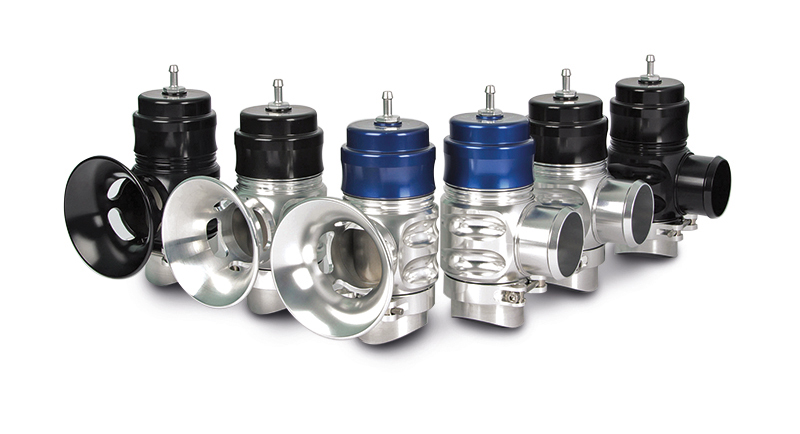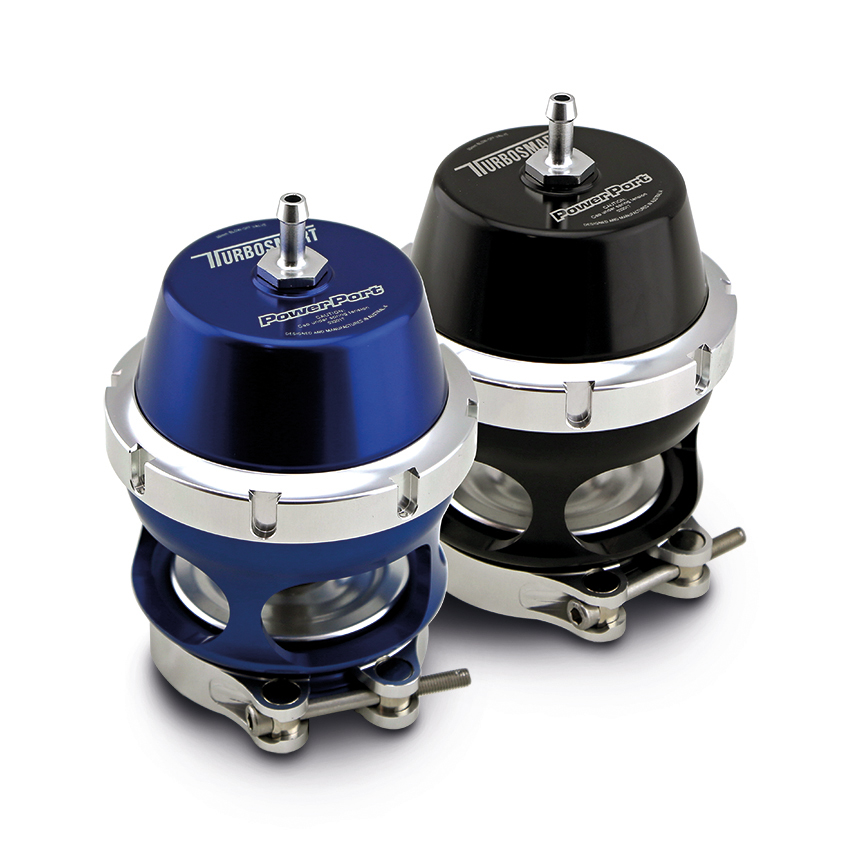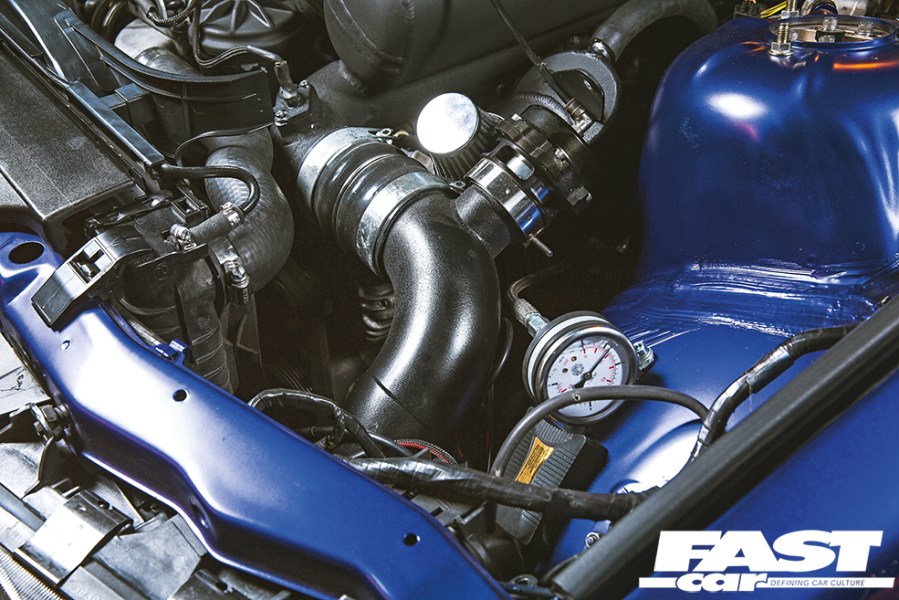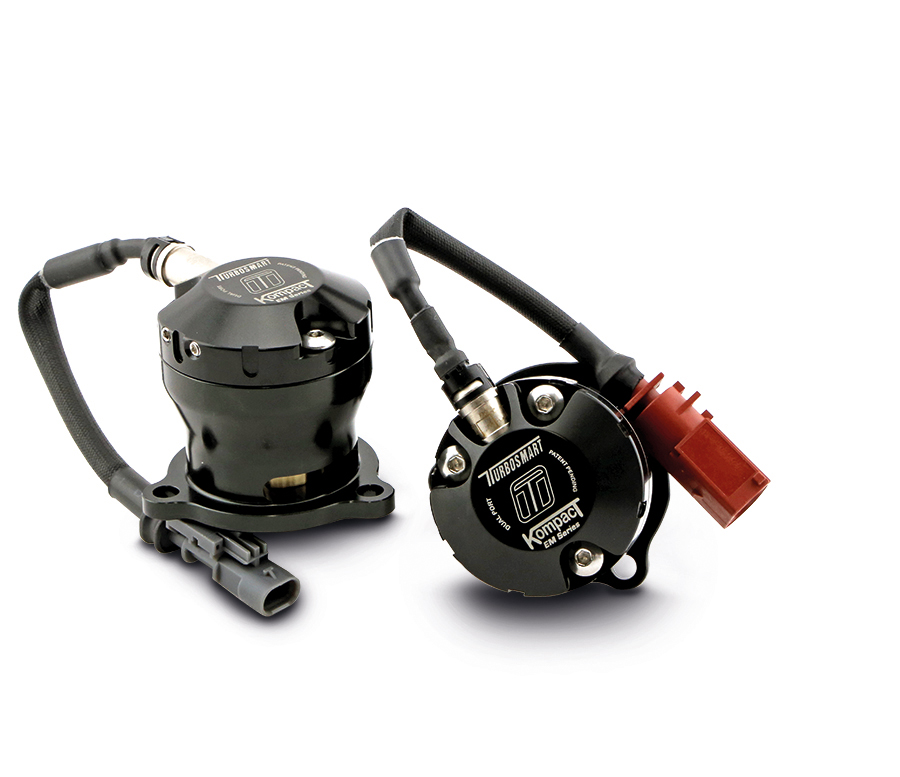Release the pressure, it’s our blow-off valve guide! We speak to Mark Arnold at Turbo Performance to get the low-down on BOVs.
What are blow-off valves and what do they do?
A blow-off valve or dump valve – more commonly known as a diverter valve or recirculating valve in recent years – is a valve built into the compressed boost side of the turbocharger or pipework. This allows excess boost pressure to escape from the turbo system when coming off the throttle. It’s what makes turbo engines go pshhh, especially tuned cars.
Many older-style BOVs utilize a vacuum line, which allows the piston to open when the throttle closes. This, in turn, releases the pressurized air. Nowadays though, modern manufacturers equip their cars with electronically-actuated BOVs mounted directly to the turbo compressor housing. This relieves pressure on the turbo itself and stops any excessive surge while allowing the turbine blades to continue spinning, resulting in greater longevity for the blades, shaft and bearings. It also allows for marginally quicker spool up between gearchanges and throttle application.
Is every blow-off valve the same?
In short, no. While they all effectively do the same job of allowing excess boost pressure to escape from the turbo system, the way they go about this can vary significantly. Fully atmospheric BOVs vent (or dump, hence the name) all of this excess boost straight out into the air, which gives the trademark ‘whoosh-tish’ sound associated with blow-off valves.
More modern ECU systems can encounter issues if all of this air is expelled direct to atmosphere. This is because the reduction in metered air volume can confuse the ECU and lead to overfueling issues. To keep things working as they should, manufacturers use a recirculating-type valve. This plumbs the vented air back into the inlet system, so as to not confuse the volumes of metered air within the system.
Unfortunately for some, the lack of noise with recirculating valves is a downside. Fortunately, there is a third option: a dual-port BOV, which gives an atmospheric noise while still recirculating enough air in the system to keep the ECU happy.
Finally, the latest generation of cars use direct electronic replacements. These usually feature (certainly in the case of Turbosmart’s EM range) billet aluminum casings, brass pistons and considerable faster electronics to operate the valve.
What are blow-off valves made of?
Generally speaking, aftermarket blow-off valves consist of an aluminum body, a brass piston and a spring for the piston to work against. Depending on whether it is pneumatic operation or electric, they will either have a plug or banjo bolt vacuum take-off.
How do aftermarket blow-off valves differ from OEM versions?
Quite often, OEMs make their stock valves from a plastic injection-molded material, comprising a plunger with a rubber diaphragm that over time can fatigue and begin to leak – especially with increased boost pressure and heat. Stock valves are also often smaller, which means they cannot flow enough air to fully de-pressurize the system – again proving problematic when boost levels have been increased.
This, in turn, can cause compressor surge as the boost pressure struggles to escape and ends up trying to exit back through the turbo itself – which can be heard as a fluttering or ‘turkey gobble’ noise (often incorrectly called wastegate chatter) as the air hits the rotating blades of the turbo.
Aftermarket BOVs do away with the rubber diaphragm and are often much larger, meaning no leaks and much higher flow rates
Why, or when, would you need to upgrade your blow-off valve?
Many people upgrade their blow-off valve simply to gain the noise, which, even on a completely stock car is quite easy to achieve. But the main reason to upgrade your BOV would be to improve performance and increase reliability. If your car is over ten years old, or is running higher than standard boost pressure, there is a good chance that your stock BOV could be either leaking (meaning you are losing power through reduced boost levels) or isn’t capable of flowing enough air (leading to potential turbo problems further down the line). For this reason, an uprated BOV should be one of the first considerations for upgrading when tuning a turbocharged car.

How important is it to get the right type of blow-off valve?
Like most tuning parts, getting the right blow-off valve can depend on what your goals are for the car. Are you just looking to add a cool ‘whoosh-tish’ soundtrack to your gearchange? Are you wanting to replace a leaking OEM valve on a standard engine? Or are you looking for the ultimate in performance to help reduce your lap times?
Then there’s your specific application to think about. What type of BOV you may need could depend largely on your ECU requirements and whether it needs to add some recirculation or can simply vent everything to atmosphere.
Finally, you need to consider space, as there’s no point in buying a big BOV that can flow loads of air if you can’t physically fit it in your engine bay. But whatever your needs, Turbo Performance will be able to advise and supply something suitable, from stock power right up to big-boost race applications, and even the latest electronically-controlled versions.
What causes factory blow-off valves to fail, or not be suitable for the task?
The main reason for blow-off valve failure is usually fatigue in the plastic body itself, or of the rubber diaphragm as a direct result of boost pressure and heat. Most cars feature mass-manufactured valves, ultimately built to a budget for a specific power level and to ensure a good shelf life. However, once you push things, and you start running more boost and higher engine temperatures, the natural shelf life of the OEM product declines due to its cheaper materials and manufacturing process. By fitting an aftermarket valve, you will eliminate these issues and have a more effective valve that will also last much longer.

What other mods should you consider when uprating your dump valve?
That is a long list, but one of the simplest is a boost gauge. If your car ever feels down on power, a boost gauge gives you immediate insight into whether you’ve got boost-related issues. It’s also great to check that you are hitting optimal requested boost pressure. On modern cars, you can also achieve this with an OBD reader; devices like the Cobb Accessport and similar can show all kinds of engine parameters, including boost. More often though, you temporarily install an OBD just for diagnostics if required.
Another modification that you could make while you are fitting a BOV would be to replace your factory rubber hoses with silicone alternatives, as this will ensure the system remains in optimum condition with no air leaks.
Are there any downsides to uprated BOVs?
Some models can require a small amount of maintenance, but other than that the only downside is your fuel bill is likely to increase, as you will find yourself using boost all the time to hear that awesome blow-off noise.
What are the most important things to look out for when buying an uprated blow-off valve?
It’s all about the R&D and testing. Follow a brand that you know has strong technical facilities, partners and development platforms – such as Turbosmart – and you will love every second of BOV ownership.






